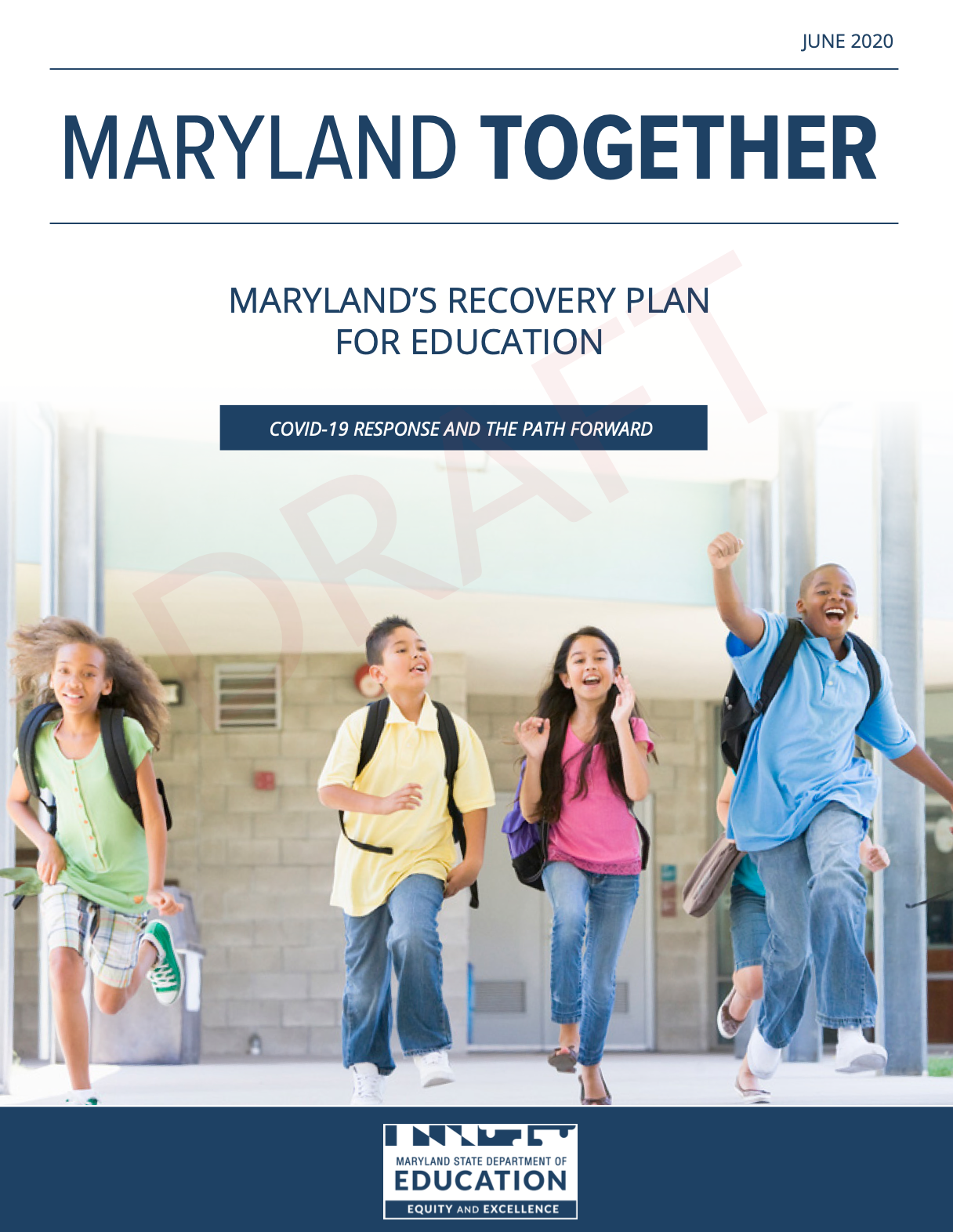Maryland Planning for the Eventual Reopening of School Buildings

by Sudha Sudhaker ‘21
Following the release of a revision to the Maryland State Department of Education’s (MSDE) recovery plan for opening schools, Montgomery County Public School (MCPS) sent out a survey to all parents in the district to solicit their feedback about reopening school buildings in the Fall. The deadline for responses is Wednesday, July 8.
The stated goal of the survey is “to identify solutions that make transitions to and from remote learning and a return to in-person instruction, as seamless as possible,” and MCPS requests that parents consider the options of continuing with remote learning; a mix of some in-person learning and remote learning; and schools opening with restrictions such as social distancing. The survey also asks parents their opinions on topics such their need for childcare, the best schedule for in-person learning, and if their children require the school system or public transportation to get to school.
The letter that accompanied the MCPS survey states, “This survey is designed to gather community input around key elements that may be a part of the district’s recovery plan for the fall.” Even if the MCPS survey results show that a majority of parents want schools to open, however, the school district faces a number of challenges to meet the requirements of MSDE for the safe reopening of school buildings. All local school systems must have their recovery plans completed and posted on their website by August 14. Although learning will be altered once schools reopen, MSDE requires that school systems maintain College and Career Ready Standards in all content areas to ensure the success of students. School must also meet the needs of students with disabilities. MSDE states in its Recovery Plan that, “the national health crisis does not abridge the rights of students with disabilities.”
According to information from the Centers for Disease Control (CDC), once school buildings reopen across the nation, schools may consider implementing safety protocols for cleaning and disinfecting, ventilation, modified layout, and food service. The school system could require that frequently touched surfaces within the school and on the school busses are disinfected daily. Schools would also ensure that there are adequate supplies to discourage sharing or touching of materials. Increased air circulation would be provided through properly operating ventilation systems and opening windows and doors as much as possible. Physical barriers and guides, such as sneeze guards and partitions, in areas where it is difficult to maintain social distancing, could be implemented as well.
The CDC states that social distancing will be maintained on school busses by having, “a child sits one to a seat and by alternating the rows in which students sit.” When alternate seating is not possible, the use of face coverings will be encouraged. Siblings from the same household will be seated next to each other, and it will be recommended that passengers sit in the same seat going to and returning from school. The MSDE also requires that local school systems develop a system for tracking attendance when students practice distance learning, so that teachers can know if the student is engaged in active work when they are logged on.
When a staff or student presents COVID-19 symptoms, a COVID-19 positive test, or possible exposure to a person with COVID-19 within the last 14 days, schools systems must follow procedures developed by the MSDE in collaboration with the MD Department of Health and guidance from the CDC. Sick staff members or students are required to stay home until they have met the CDS’s criteria to discontinue isolation. In order to prevent the spread of the virus, it is required that, “individuals who are sick should go home or to a healthcare facility depending on how severe their symptoms are, and follow CDC guidance for caring for oneself and others who are sick.” An isolation room or area will be designated to separate anyone who has COVID-19 symptoms or tests positive but does not have symptoms. Standard and transmission based precautions will be used when caring for sick individuals. MSDE also requires that school administrators inform local health officials, staff, and families immediately of any cases of COVID-19 while maintaining confidentiality in accordance with the Americans with Disabilities Act.
MSDE mentions that research has consistently proven that complete virtual learning is not as effective for students accustomed to a physical school setting. Most students prefer learning amongst students and teachers for greater comprehensions and collaborative purposes. Therefore, systems may integrate synchronous learning as much as possible in order to avoid a fully online schedule. On average, direct instruction or small group learning has proven to be far more beneficial than a specific change to the curriculum.The time when students are not in school may best be used in one-on-one instruction and small groups.
MSDE suggests that schools consider several scheduling options in order to meet the needs of social distancing. Options include a one-day rotation where only 25 percent of the students in a school would report on each of four days of the week. Schools could also consider adopting an A/B week where half of the student population will report to school for four days in the week, while the rest of the population utilizes distance learning. Lastly, school systems could consider having elementary students start school first and spread out across two buildings. Secondary students would complete distance learning. Once it is deemed safe, elementary students would transition back distance learning and secondary students would start.